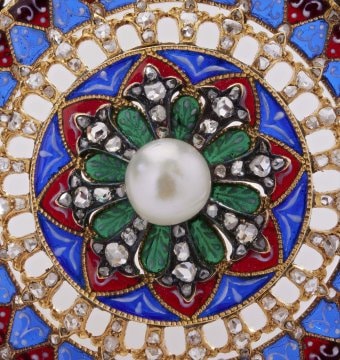Already used in Ancient Greece in the 2nd millennium BC, enameling is the product of a skillful alchemy involving the fusion of metal and glass.
Enamel work was very popular in France between the 12th and 17th centuries and was passed down through the great families of enamellers, who were constantly developing new techniques: champlevé enamel, which was very popular in the Middle Ages, particularly in Limoges; grisaille enamel, typical of the work of Pierre Reymond (around 1513-1584); and plique-à-jour enamel, used by Charles Riffault, a Parisian enameller and jeweler who worked for Maison Boucheron in the 1870s and 1880s. Enamel also played a part in the creative explosion of Art Nouveau, fueled by the proliferation of scientific knowledge at the turn of the 19th and 20th centuries.
As a regular companion to the technical and ornamental research that has punctuated the history of jewelry, enamel intrigues and inspires. Transparent, translucent or opaque, enamels lend a subtle play of texture to contemporary creations such as the narrative rings by contemporary designers Ilgiz Fazulzyanov (b. 1968) and Elena Okutova. The same is true of the Automate Fée Ondine (2017), Van Cleef & Arpels' first Extraordinary Object, dressed in sapphires with translucent wings hemmed in diamonds and crafted in plique-à-jour enamel.
Join us on September 14th at 7:00 pm, for a fascinating look at the materials and techniques involved.
Speakers:
Marie Oberlin, Master Enameler at L’ÉCOLE, School of Jewelry Arts
Paul Paradis, Art historian, Decorative Arts and Jewelry Specialist, Lecturer at L’ÉCOLE, School of Jewelry Arts
This online conversation will be broadcast from L’ÉCOLE, School of Jewelry Arts in Paris. For audiences in Europe and Americas, and for the conversation conducted in French, please click here for the other available timeslots.

